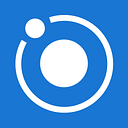How to study for the Neuro CAQ
For neuroradiologists, this specialty exam should be a straightforward assessment
Despite the Certifying Exam’s allowance to take three neuro-specific sections, legacy and tradition means that the ABR Subspecialty Certification in Neuroradiology (Neuro CAQ) will still be important for you to take as a neuroradiologist. Whether you’re in private practice or academics, it’s still used by as an added assurance to hospitals, referring physicians, and other entities that your interpretations will be particularly safe for brain, spine, and head/neck cases.
Because I spend every year thinking about how to study for the Core Exam, my colleagues in neuroradiology ask me about studying for the Certificate of Advanced Qualification in Neuroradiology (Neuro CAQ) Exam, and I wanted to share the highest yield tips here.
Do what worked on the Certifying Exam
When you took the Certifying Exam, you probably selected neuroradiology for all 3 sections. If that’s you, then whatever you did for the Certifying Exam will work for the Neuro CAQ. That’s because the Neuro CAQ exam is essentially identical in content and format. The caveat is there may be a slightly greater mix of esoteric neuroradiology questions that few people will answer correctly.
Expect to study less. By now, you’re likely in academic or private practice, and time to study is scarce. Don’t panic — you’ll study less for this exam than either the Core or Certifying exams. That’s partly because of the hard constraints of being a new attending radiologist, and partly because you’ve seen this material so much — in fellowship, on the Certifying Exam, and hopefully in your current practice.
Be Thrifty with New Book Purchases
Don’t go crazy purchasing a ton of new resources for this exam. That’s because you won’t have time to fully utilize all of the stuff you spend money on. Spend your educational account money instead on something useful, like finishing your CME+SAM with Orbit Radiology.
Here are some key book titles my colleagues and I have recommended over the last few years:
PocketRadiologist Brain — printed by Amirsys, the publisher founded by University of Utah radiologists and acquired by Elsevier. The PocketRadiologist series is out of print, but there are plenty of used copies of PocketRadiologist Brain online (link: Amazon), or check your medical library. This print book reviews the 100 most essential brain diagnoses in outline format, along with typical appearance and demographics. The Head & Neck book in this series is also somewhat worth getting (link: Amazon), but the Spine book is low yield.
Neuroradiology: The Requisites — also printed by Elsevier. This is the most strongly recommended book for the Neuro CAQ. Feel free to get a slightly older edition if it’s free to you or saves you money. If you’re a fellow reading this post, go ahead and read this book cover-to-cover over the course of your year. If you’re an attending hoping to cram, no worries at all. Just select the areas you’re weakest in, and begin by looking at images and captions. Either way, be sure you’re not glazing over or falling asleep when you read.
Osbourne’ Brain — also printed by Elsevier. This is not recommended. It’s a re-packaging of StatDx style material and expensive.
Be Thrifty with Question Banks
It’s easy to throw down a credit card and expect that you’re buying security in passing the Neuro CAQ. Like a gym membership, subscribing to a question bank is also likely to go heavily underutilized. If your R4 (PGY-5) friend still has access to a question bank from residency, you’ll want to just borrow access to exercise. Once again, spend your educational account money instead on something useful.
If you’re looking for a question bank that simulates the Neuro CAQ, you’re over-thinking this. You’ve already taken (and passed) the best simulator for the Neuro CAQ, namely the neuroradiology modules on the Certifying Exam. You know the style of questions — this isn’t rocket science.
The goal with using a question bank is to keep your synapses awake by reviewing an assortment of topics, and to engage in active learning that stimulates brief excursions into text or video.
Core Exam Related Question Banks — you probably already have access to one of the Core Exam specific question banks through your R4 friends (PGY-5) who aren’t using their account anymore.
Newer Neuro-Specific Question Banks — waste of money if you already have access to the Core Exam question banks.
Clinical Lectures
If you can get access to Core Exam focused clinical lectures on neuroradiology, that’s a great way to get refreshed on neuroradiology topics. You’ll also pay attention more than ever before to those neuro topics, since you’re motivated to pass, and that’s good for retention. Zoning out while you watch lecture videos is both useless and deprives you time with your friends and family, so stay active by taking notes or pausing and doing a Google or radiopaedia.org search on something that piques your interest from the lecture.
Bottom Line
It’s hard to squeeze much time into your attending schedule to study, so remember that you’ve already studied this material many times over, and focus on high-yield study resources. If you have a large neuro case mix in your practice, that makes studying easier, but if you’re doing more general radiology in your post-fellowship life, you’ll still do totally fine.
About the Author
Ram Srinivasan MD PhD DABR NeuroCAQ is a neuroradiologist and Assistant Professor of Radiology at Weill-Cornell School of Medicine.
